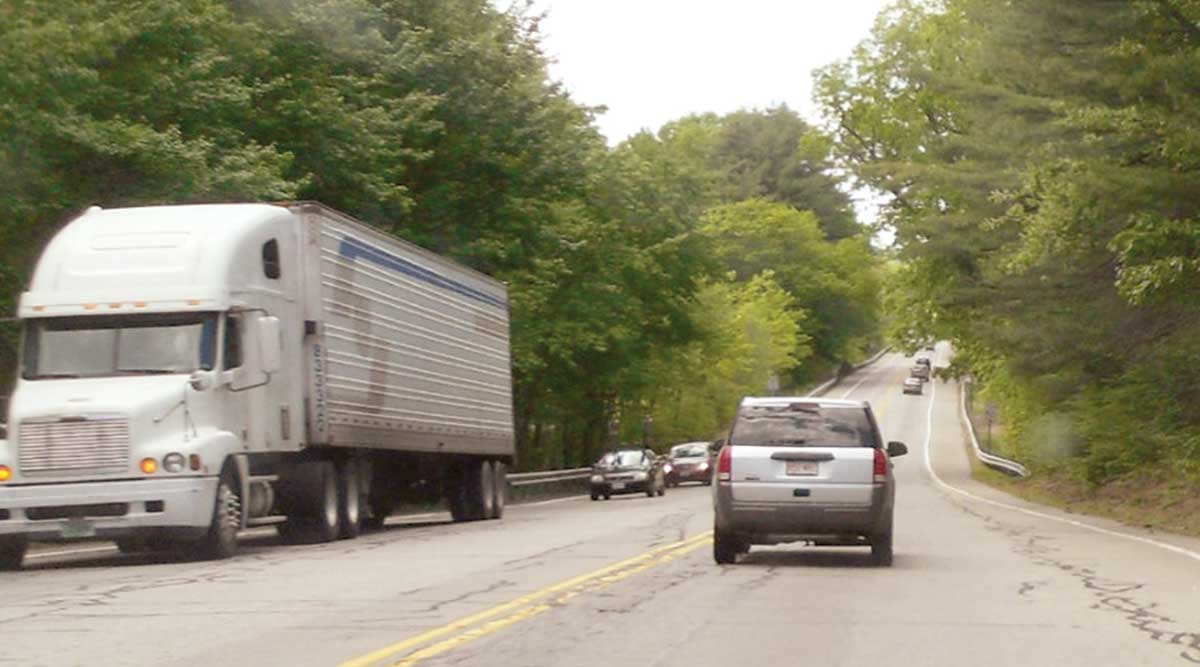Trucking Groups Worry Rural Roads Overlooked in Infrastructure Debate

This story appears in the May 29 print edition of Transport Topics.
Rural roads don’t get much attention in the national debate about infrastructure spending, but many local lanes also are in need of upgrades from handling freight traffic that is being either diverted from or headed to major highways, state association executives said.
“Our rural roads and bridges are in very poor condition,” said Chris Maxwell, president of the Rhode Island Trucking Association. And he’s fearful that a tolling initiative on several interstates will chase more traffic to local roads.
“They’re putting truck-only tolls throughout the state, so soon our rural roads will fall victim to trucks diverting off the interstate,” Maxwell said, adding that he expects truckers will seek to avoid the maximum $40 in tolls per day by taking detours on rural roads. He said there are about 33 toll entries in Rhode Island and five different interstates, with the truck-only network designed to “capture as much traffic as they can.”
The lanes affected by the tolls include interstates 95, 195 and 295 and on the state level Route 146 and the interchange at routes 6 and 10, he said.
Although Rhode Island is the smallest state, it has huge infrastructure challenges. According to TRIP, a national transportation research group, 37% of the state’s rural pavement was in poor condition as of May 2015.
The group also rated 37% of Michigan’s rural pavement in poor condition, but that doesn’t surprise Michigan Trucking Association President Walt Heinritzi.
“Michigan roads on average are not in excellent condition, and some are in quite poor condition — particularly local roads and city streets. Local streets for the most part are deplorable, and the country road system certainly needs some upgrading.”
Fortunately, the state is taking action. The Michigan Critical Bridge Program, administered by the Michigan Department of Transportation, identifies bridges that need to be rehabilitated, and “that work is ongoing,” Heinritzi said.
“The state is doing the best it can even though there is a huge backlog of road maintenance and construction that needs to be done,” he added.
Heinritzi also noted that Michigan on Jan. 1 raised fuel taxes, and revenue from the increase will flow into a broad fund that is distributed on a percentage basis to either state roads, federal roads or local roads.
“A good hunk goes to cities, villages, townships and counties, and then the state trunkline system on the Michigan roads,” he said.
In South Carolina, the state is making a series of improvements to rural roads to improve safety, including installation of rumble strips, raising and/or widening of pavement markers and installation of high reflective signs and guardrails, according to South Carolina Trucking Association President Rick Todd.




